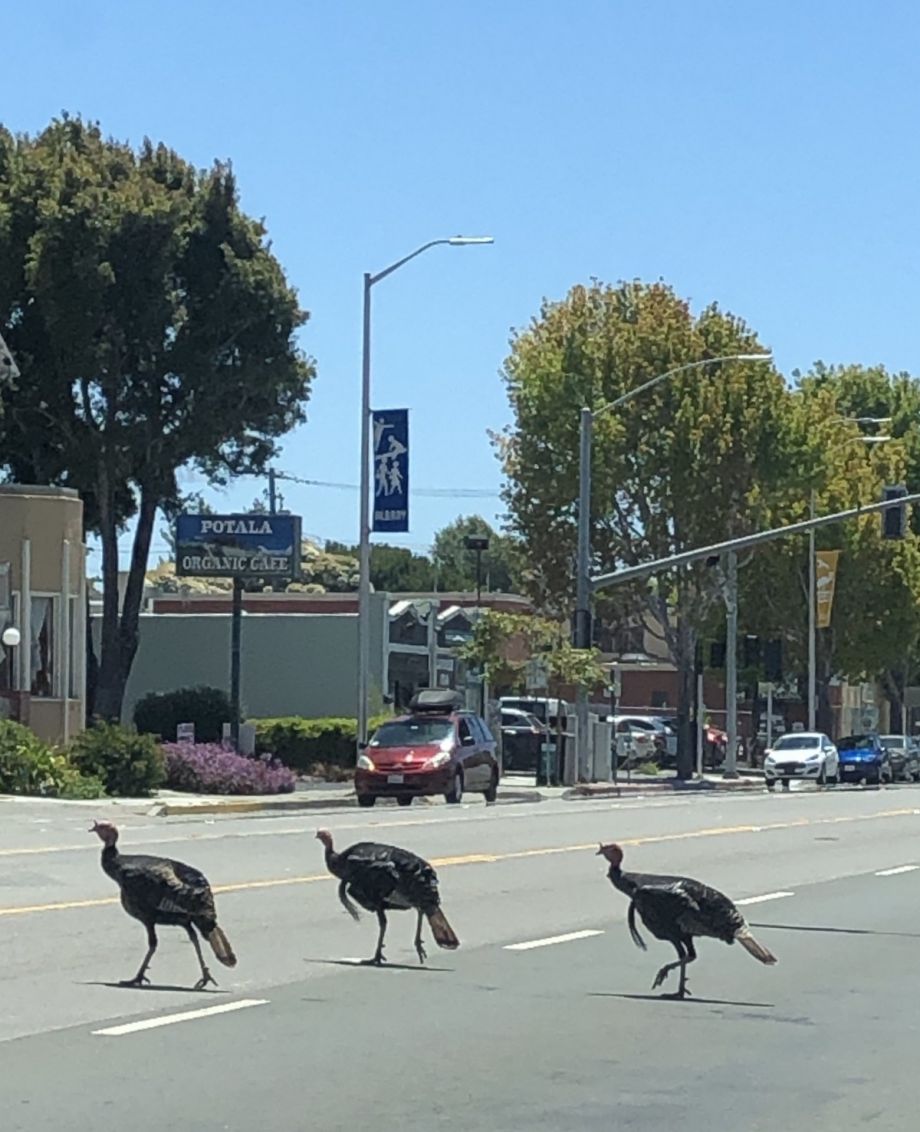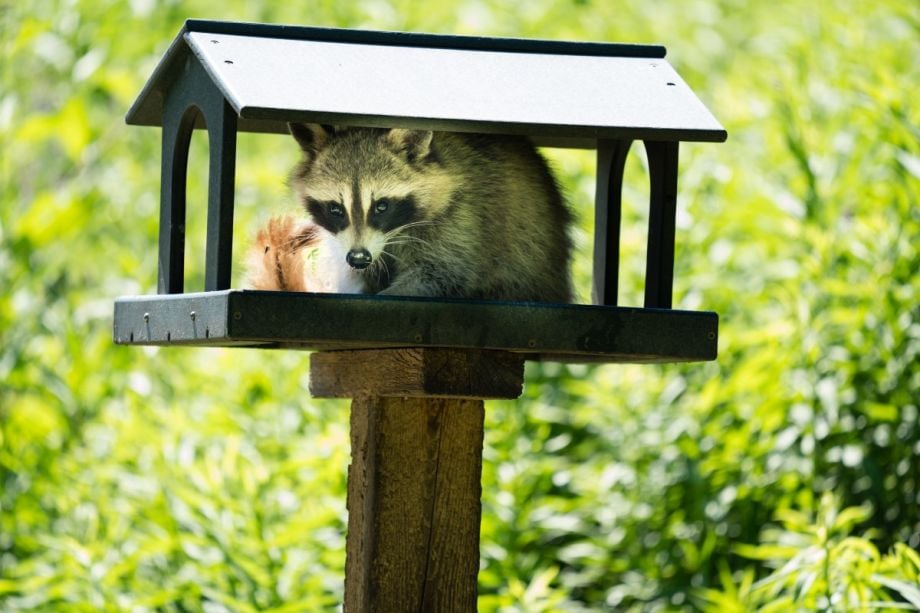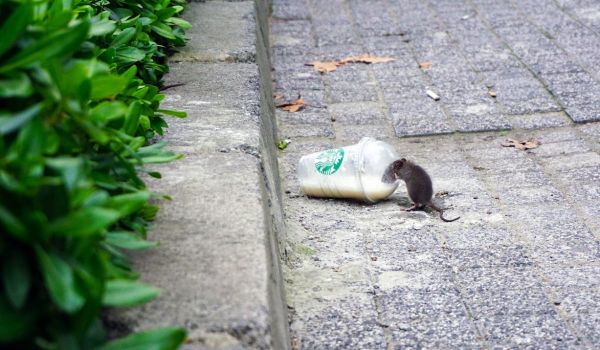From raccoons rummaging through garbage bins to coyotes roaming the streets and opossums snacking on garden vegetables to feed their young, urban wildlife can be, well, annoying. It might be tempting to call animal control to deal with an unwanted animal situation, but what if the best option was to learn to coexist with our furry wildlife neighbors instead?
That’s exactly what the City of Chicago has decided to promote with its new Wildlife Management and Coexistence Plan. After all, there are plenty of upsides as well. Opossums feast on ticks, which helps combat Lyme disease. Raccoons mark their individual territories, so removing one simply invites another to take over its space. Rather than getting rid of the animal, the best thing you can do is get rid of what’s drawing them there (usually a food source like unkempt garbage bins) in the first place.
The coexistence plan was designed to promote exactly this education-first approach. Ilanah Taves, a PhD student who was working with the city on a coyote management plan, was the one who put the pieces together: What if they paired the city’s Animal Care and Control department’s understanding of resident animal issues with the scientific expertise of the Urban Wildlife Institute at the Lincoln Park Zoo?
That’s how it all began in 2016. It took over two years for the plan to be drafted and some more time after that to finalize it before releasing it in 2021.
“To us at animal control, the first motivation when you got a request was to go service the call and remove the source of the problem — the animal,” explains Mamdou Diakhate, executive director of the city’s animal control department. State law mandates that all raccoons, skunks, and bats be euthanized. Animal control was sometimes able to relocate other healthy, non-aggressive wildlife or transfer sick and injured animals to wildlife rehabilitation organizations. “I’d say we did a good job removing raccoons, for example, but we forgot one thing,” Diakhate says. “We don’t know the specific behaviors and habitats of every animal. We came to find out that once you remove one from its space, you invite two or three more to take its space.”
Even as a former veterinarian, Diakhate himself didn’t know this stuff before partnering with the zoo’s institute. “We were just spinning in circles. The problem just got bigger and bigger. We constantly had frustrated residents who thought we weren’t doing anything,” he adds.
In addition to profiling 16 urban wildlife species from bats to bees and explaining the department’s new coexistence-focused management strategies, one central thing that the 38-page document does is explain the shift in philosophy from control to coexistence.
“[The plan] changes the direction of the relationship between humans and wildlife from management, meaning getting rid of them, to one that’s more about coexistence and understanding when we can leave them alone,” explains Dr. Seth Magle, director of the Urban Wildlife Institute at the Lincoln Park Zoo. For him, it’s also a natural extension of the urban wildlife coexistence work that he’s committed to, both at the zoo and within the Urban Wildlife Information Network which he founded and directs.
“Not every situation calls for coexistence, like if you have a bat in your house or a raccoon in your attic,” Magle adds. “But a lot of people will see a coyote running down the street and think that it shouldn’t be there, but the city has embraced the idea that in these cases where the animal is just doing its thing in its natural habitat, which happens to be our city, no intervention is needed.”
A central tenet of the plan is that it was written with the intention that it could easily be picked up and modified for use in other cities as well. “That’s why the animal profiles are their own section. If someone was working in Colorado, for example, where they don’t have opossum, they can lift out that section and put in one on prairie dogs,” Magle says. So far, no one has duplicated the plan as far as he knows, but they’re hoping someone will soon.

Are they jaywalking? Don't call the police! (Photo by Melinda Young Stuart/CC BY-NC-ND 2.0)
The plan outlines best practices for city dwellers that include not feeding the animals, ignoring them and letting the small stuff go when possible, and making sure that backyards and garbage bins are clean — especially for those who want to interact with urban wildlife as little as possible. “Once you do all of those things, there should be no reason for the wildlife to be coming into your yard,” Diakhate says.
Thanks to efforts to get the word out about the plan, including disseminating it to residents through the city’s aldermen and showing up to local meetings to educate residents directly, Diakhate has noticed a drop in 311 calls relating to wildlife. “Wildlife was one of the highest numbers of calls we were getting, but now we’re getting less calls because people have learned more,” he says.
The department has also retooled its 311 system to prompt questions about what the animals in question are doing. If a caller reports that the animal is attacking or otherwise engaging in threatening behavior, the call goes directly to the department. But if callers report that a wild animal is simply doing its thing, they get reminded of the Wildlife Management and Coexistence plan instead.
“The wildlife isn’t going anywhere,” Diakhate says. “So, we must learn to coexist because the wildlife knows us. They study us, so we need to study and understand them, too.” Magle agrees. “There are new species interactions because climate change is driving them into new habitats,” Magle says. “On the animal side, they’re adapting to a new environment. So, on the human side, we have to change our attitudes about wildlife.”

Cinnamon Janzer is a freelance journalist based in Minneapolis. Her work has appeared in National Geographic, U.S. News & World Report, Rewire.news, and more. She holds an MA in Social Design, with a specialization in intervention design, from the Maryland Institute College of Art and a BA in Cultural Anthropology and Fine Art from the University of Minnesota, Twin Cities.
Follow Cinnamon .(JavaScript must be enabled to view this email address)















